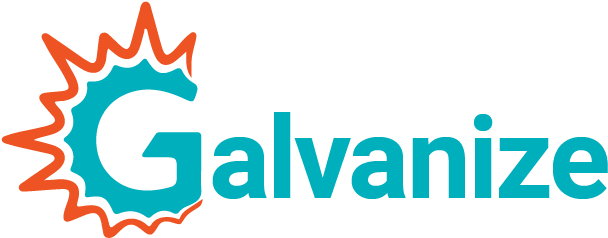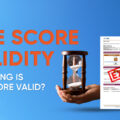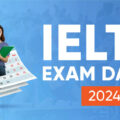
Chapter 1
Overview
The Scholastic Assessment Test or SAT is a standardized examination that allows institutions to more objectively assess where an applicant stands. It helps in determining how equipped you are for college and gaining a deeper understanding of the skills you have gained in school. The SAT is accepted by colleges and institutions in the United States, Canada, Australia, and many other countries.
The College Board, the body that conducts the SAT, is slowly transitioning the SAT suite of assessments, which includes the various SAT and PSAT tests, from paper-based to digital mode. Starting from March 2023, the SAT has begun to be administered digitally for international students. From Spring 2024, students from the US too will begin to take the digital version. The digital SAT consists of two sections: Reading and Writing, and Math. Each section consists of two equal-length modules. These modules are adaptive, meaning that students’ individual performance in the first module of a section determines the overall difficulty level of the questions that appear for them in the second module of that section.
Securing a good score on the digital SAT demands extensive planning and preparation. Students must learn or revise important topics in English and Math, familiarize themselves with the question types in depth, and pick up crucial strategies to improve accuracy and time management. Preparation must begin well in advance and be steadily supported by practice, review, and further practice. Planning all of this is crucial since the exam date chosen by the candidate will define how he or she should prepare.
Read on to understand how the digital SAT is different from the paper-based test and more about the digital test’s syllabus, question distribution, pattern, and scoring. You will also get to read about a few preparation tips!
SAT Exam Highlights
| Exam Name | Digital SAT |
| Conducted By | College Board |
| Exam Type | For Undergraduate Programs |
| Sections | 2 (Reading, Writing, and Maths) |
| Number of Questions | 98 |
| Duration | 134 Minutes |
| Score Range | 400 – 1600 |
| Language | English |
| Mode of Exam | Digital |
| Negative Marking | No |
Chapter 2
Digital SAT Exam 2023
Paper-Based to Digital SAT
The digital SAT looks and feels quite different from the paper-based SAT with its decreased duration, discrete questions based on short passages (instead of the long ones in the paper-based test), combined Reading and Writing section, and the all-calculator-allowed Math section. The following are some key differences between the paper-based and digital versions of the SAT Test.
| Characteristic | Paper-based SAT | Digital SAT |
| Adaptability | Not adaptive | Adaptive |
| Sections |
|
|
| Number of minutes | Total: 180
|
Total: 134
|
| Number of questions | Total: 154
|
Total: 98
Reading and Writing: 54 Math: 44 |
| Average time per question | Overall: 1.17 min
Reading: 1.25 min Writing and Language: 0.80 min Math (no calculator): 1.25 min Math (calculator allowed): 1.45 min |
Overall: 1.37 min
Reading and Writing: 1.19 min Math: 1.59 min |
| Scores reported | 1 total score
2 section scores 3 test scores 7 sub-scores 2 cross-test scores |
1 total score
2 section scores Score band for each content domain |
| Total score | 400–1600 | 400–1600 |
| Section score | 200–800 | 200–800 |
| Question format | Evidence-based Reading and Writing: Set-based
Math: Discrete, set-based |
Discrete |
| Question type | Evidence-based Reading and Writing: Four-option multiple-choice with a single best answer
Math: Four-option multiple-choice with a single correct answer; student-produced response, some with multiple correct responses. |
Same as the paper-based test |
| Reading and Writing passages—topics | US and World Literature (prose passages) in the Reading section alone, Careers and Humanities in the Writing & Language section alone, and History/Social Studies and Science in both sections. | Literature across genres, History/Social Studies, Humanities, and Science. The passages are more inclusive instead of being US and West-centric. |
| Reading and Writing passages—number and length
Note that 1 word = a set of 6 characters |
5 Reading passages of 500–750 words each
4 Writing and Language passages of 400–450 words each |
54 passages of 25–150 words each |
| Math contexts—topics | Social studies, science, and real-world problem solving | Same as the paper-based test |
| Math contexts—percentage and length | In-context questions constitute around 35% of the test, with varying word counts. | In-context questions constitute around 30% of the test, with the majority of them being under 50 words. |
Syllabus and Question Distribution for the Digital SAT
To start preparing for a test, you need to know what topics and skills to focus on. Now that we have had an overview of the digital SAT, let us learn more about its basic syllabus and question distribution.
Reading and Writing
The Reading and Writing section of the digital SAT features several academic and literary texts selected and structured with the intention of testing students on reading comprehension, rhetoric, language use, and critical reasoning. Skills on the Reading and Writing test represent one of four content domains:
- Information and Ideas
- Craft and Structure
- Expression of Ideas
- Standard English Conventions
Each question can be classified under a single content domain.
| Content Domain | What is involved | Question Types | Question Distribution |
| Information and Ideas | The task is to locate, interpret, analyze, and bring together information and ideas.
|
|
Around 26%/
12–14 questions |
| Craft and Structure | The task is to
|
|
Around 28%/
13–15 questions |
| Expression of Ideas | The task is to revise texts to
|
|
Around 20%/
8–12 questions |
| Standard English Conventions | The task is to revise texts to make them conform to core conventions of Standard English sentence structure, usage, and punctuation.
|
Topics to be revised include
|
Around 26%/
11–15 questions |
Math
The digital SAT Math section focuses on core elements of algebra, advanced math, problem-solving, data analysis, geometry, and trigonometry that are considered necessary for college readiness. It includes multiple-choice and student-produced response (SPR) questions that measure how fluent students are with math concepts, skills, and practices and whether they can apply these to different contexts.
| Basis of Classification | % or Number of Questions |
| Format | |
| Multiple-Choice (MC) | Around 75% / 28–32 |
| Student-Produced Response | Around 25% / 8–12 |
| Questions in Context | Around 30% / 10–14 |
| Content Domain | |
| Algebra | Around 35% / 13–15 |
| Advanced Math | Around 35% / 13–15 |
| Problem-Solving and Data Analysis | Around 15% / 5–7 |
| Geometry and Trigonometry | Around 15% / 5–7 |
The Pattern of the Digital SAT
The digital SAT lasts for 2 hours and 14 minutes overall, with two sections: Reading and Writing, and Math. Each section consists of two modules. The first module contains a mixture of easy, medium, and difficult questions. Based on how you perform in the first module, the second will be either more or less difficult overall. The test has a range of 400 to 1600 points. Look at the table below, which explains the SAT exam pattern in detail.
| Section | Content Domains | Test Pattern |
| Reading and Writing:
54 questions |
|
Duration: 64 (2 modules of 32 minutes each)
Score Range: 200 to 800 |
| Math: 44 questions |
|
Duration: 70 (2 modules of 35 minutes each)
Score Range: 200 to 800 |
| Total:
98 questions |
All the above | Duration: 2 hrs 14 min
Score Range: 400 to 1600 |
Chapter 3
What is a Good Digital SAT Score?
Let us first understand how your score is calculated. We saw that the Reading, Writing, and Math sections contain 54 and 44 questions, respectively. Since the test has no negative marking, the ‘raw score’ for each section is the number of operational questions you get right in that section. The raw score is converted into a ‘scaled score’ between 200 and 800.
The scaling is done to account for slight differences in difficulty levels among different test versions. The total score is the sum of the scaled scores of the two sections and is within the 400–1600 range. This composite scaled score is used to generate percentile ranks, which represent your performance in comparison to other test takers within several groups ranging from “your school” to “all testers”. If you scored in the 72nd percentile, for example, you outperformed 72 percent of the test takers in the specified group.
The higher your percentile rank, the better your score. While any percentile rank above 50 is good, a score of 1350 or above would put you in the top 10% of test takers, increasing your chances at more selective institutions. A percentile closer to 97% will increase your chances of acceptance into Ivy Schools! For a better understanding, let us look at the All Tester Percentiles released by the College Board for spring 2023. (The table below includes only a few selected rows.)
| Composite Score (Out of 1600) | Percentile Rank |
| 1600 | >99 |
| 1550 | 99 |
| 1510 | 98 |
| 1500 | 98 |
| 1450 | 96 |
| 1410 | 94 |
| 1400 | 93 |
| 1350 | 90 |
| 1340 | 89 |
| 1300 | 86 |
| 1250 | 81 |
| 1220 | 77 |
| 1200 | 75 |
| 1150 | 68 |
| 1130 | 65 |
| 1100 | 60 |
| 1080 | 57 |
| 1050 | 51 |
| 1030 | 48 |
| 1000 | 43 |
| 980 | 40 |
| 920 | 30 |
| 830 | 17 |
| 770 | 9 |
| 650 | 1 |
| 620 | <1 |
| 400 | <1 |
You would have observed that student achievement tends to clump in the middle of the scale, around 1000, the halfway point between 400 (minimum score) and 1600 (maximum score). The higher and lower ends of the scale are occupied by far fewer examinees. It is the higher percentiles that you should aim for. How do you get there? By minimizing your mistakes and getting as many questions right as you can!
Chapter 4
How to Prepare for the SAT Exam?
When you are preparing for your SAT exam, keep the following tips in mind for studying and time management:
Identify Your Skills and Plan Your Preparation
At the outset of your preparation, you must take a full-length mock exam to discover your weaknesses and strengths. Observe how the test feels. Identify what kind of questions you are good at and what you need to work on. Find what you must learn and what you are overlooking. Plan a proper study schedule and stick to it. Go through relevant materials, and practice as much as you can.
Study Outside the Box
Combine your digital SAT exam preparation with some general skill development. For example, to prepare for the reading section, try reading and summarizing large articles and scientific research. Make sure you can follow the flow of thought and identify the tone and opinions of the author. Look out for elements you would find in digital SAT passages. These would include things like claims, evidence, and conclusions.
Take Mock Tests and Review Your Mistakes
Take as many full-length mock tests as you can. Time yourself, and review your performance once you are done. What mistakes are you making? Are you repeating the same kind of mistakes? What is the reason for a specific mistake? Do you need to work on your concept clarity or strategy? Or does the issue lie with your time management? Taking full-length mock tests and reviewing your mistakes will give you a realistic idea of how prepared you are and what you need to focus on to improve.
Study the Question Pattern Before the Exam
The exam pattern and general instructions are similar for every digital SAT test. Familiarize yourself with the exam structure, pattern, navigation, and instructions well in advance so that you do not feel lost or lose time on your test day. Make sure you are comfortable using the Bluebook app on which the digital SAT is administered.
Be Ready for the Test Day
Come up with a checklist of things you need to have with you on test day, for example, an acceptable device on which to take your test. You will need to download the Bluebook app on your device and check if it works. You will also need to carry your ID and a photocopy of your SAT test registration; otherwise, you will not be permitted to enter the testing room.
Rest Well on the Night Before Exam Day
It is critical to get enough sleep the night before your SAT exam so that you may take the test with a clear head. Last-minute studying can cause stress and a loss of confidence.
Secure that dream admit
Right from LOR, University Shortlisting, SOP, Application Reviews till Visa Counselling. Galvanize has your back.
Find out howFrequently Asked Questions on SAT Exam Syllabus
What is the digital SAT exam syllabus?
The digital SAT has two sections: Reading and Writing, and Math. It has a score range of 400 to 1600. The digital SAT syllabus is described in depth in the preceding article.
How to prepare for the digital SAT at home?
You may study and prepare for the test on your own with a variety of digital SAT prep resources available online. However, because this is not everybody’s cup of tea, it is best to first learn about the test structure before deciding whether or not you require SAT tutoring. Tips for studying for the digital SAT at home:
- Improve your grammar.
- Study basic critical reasoning concepts.
- Start reading nonfiction books in addition to your schoolwork.
- Improve your vocabulary.
- Work on your mental math skills.
- Perfect your time management with practice.
How much time should I give for digital SAT preparation?
Examine your schedule to see when you will be taking the test. If you have a lot of time, say 6 months, you may devote fewer hours each day to studying; on the other hand, if you have just a few weeks to prepare, you must devote more time to studying. Examine the digital SAT curriculum to determine how much time it will take to study each topic, and create a study schedule appropriately.
Can I prepare for the digital SAT in 1 month?
If you have a great study strategy, you can study for the digital SAT in one month. To prepare for the SAT, it is usually advised that you study 10 to 20 hours each week for 3 months. So, if you want to take the test in a month, increase your study time every day.
How many times can I take the digital SAT test?
The College Board has put no limits on the number of test attempts. Thus, you can take the digital SAT as many times as you wish. You must, however, pay a fee each time you register. You should also check with your target institutions to see which scores they take, as some recognize the average of all tries while others only accept the best score.
When should I start preparing for the digital SAT?
The average applicant takes 6 to 12 weeks to prepare for the digital SAT. However, the preparation time is different for each candidate. We recommend that you go through the digital SAT Syllabus and take a practice exam to get a sense of how much time you will need to prepare for the test.
What if I don’t pass the digital SAT?
In the digital SAT, there is no such thing as a pass or a fail. There is, nevertheless, a difference between a good SAT score and a poor SAT score. If the institution you are applying to is selective, you might need a higher score than the one you received. In that case, identify your weaknesses, prepare more thoroughly, and try again. However, first, check with the institution to see whether it recognizes the average of all tries or accepts just the best score.
What is a perfect digital SAT score?
A perfect score is around 1600 while an average one is around 1000. A score of around 1350 will put you among the top 10% of test takers.
Conclusion
Getting a high score on the digital SAT is challenging but not impossible. All it requires is sincere effort and time. Start at least a month before and preferably before 2–3 months. Take a mock exam and match your performance with the syllabus to see which topics and question types you need to focus on. Decide whether you want to tutor, and prepare a proper study schedule yourself or with the help of your instructor. Spend time daily on your preparation, practice the various question types, and take mock exams.
Analyze your mistakes to avoid them in the future. Each time, try to decrease the number of mistakes you make to boost your score. Revise all the concepts and strategies before your test day, and make sure you are fully aware of how the test will appear on the Bluebook app. Knowledge is power, and good preparation is confidence. We wish you all the best!









